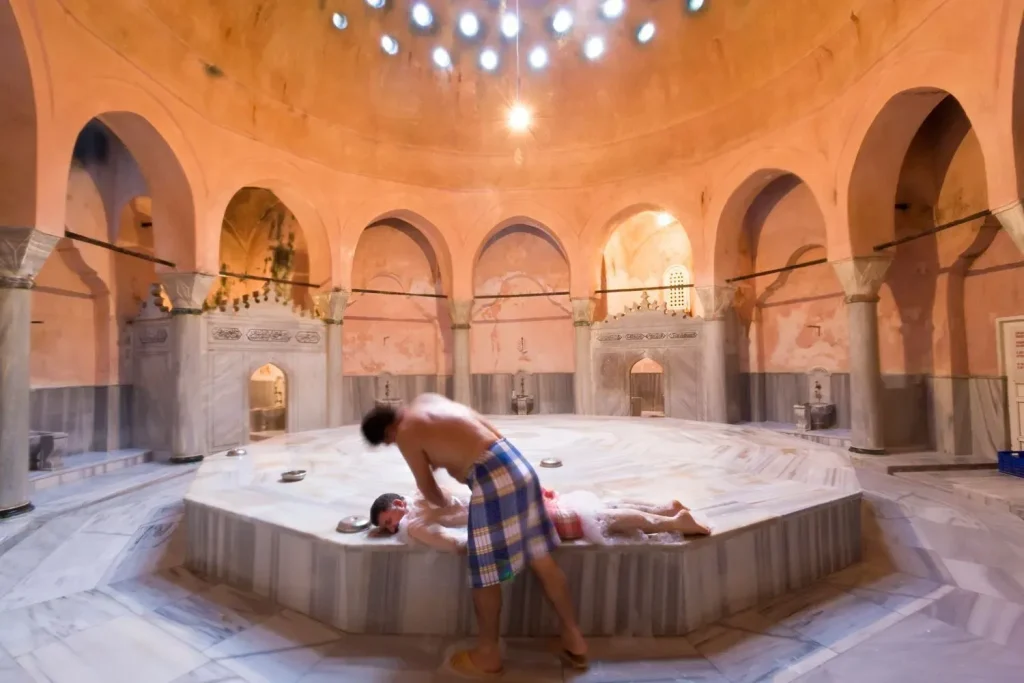The Turkish bath, or *hammam*, is not just a place to cleanse the body; it is a portal into the rich tapestry of Turkish spa culture that has evolved over centuries. Originating from ancient Roman bathhouses, the *hammam* serves as a key social and wellness space where relaxation intertwines with ritual. Today, the health benefits of *hammam* experiences are being recognized globally, offering everything from improved circulation to stress alleviation within a serene environment. As wellness travel grows in popularity, these traditional baths are seeing a resurgence, transforming into luxurious spa destinations that blend historical significance with contemporary aesthetics. Join us as we explore the fascinating evolution of the Turkish bath and its enduring impact on modern wellness practices.
The concept of a traditional bathhouse, often referred to as a *hammam*, plays a pivotal role in cultural practices centered around health and well-being. These communal bathing spaces offer not only hygiene but also a unique social experience, often seen in various forms across different cultures. The evolution of this wellness tradition into contemporary spa experiences has brought about a renaissance of ancient practices, catering to the growing demand for holistic approaches to health. As such, these spaces are becoming more integrated into global wellness travel, showcasing their relevance and appeal in today’s fast-paced world. Delving into the historical context and modern adaptations of such bathhouses reveals a rich narrative that continues to influence the spa evolution.
The Significance of Hammam in Turkish Culture
The *hammam*, or Turkish bath, is far more than a place for bathing; it embodies a rich cultural tradition deeply rooted in Turkey’s history. It has served as a communal space where friends and families connect, socialize, and uphold cultural rituals across generations. The architectural design often resembles ornate temples, showcasing intricate tiles, domed ceilings, and beautifully carved marble that not only serve practical purposes but also reflect the artistry of Turkish heritage.
In traditional Turkish culture, visiting the *hammam* is a social event often accompanied by special rituals such as cleansing, exfoliating, and massages. These practices not only promote physical cleanliness but also mental rejuvenation, creating an atmosphere where people gather to relax and unwind. The *hammam* stands as a symbol of hospitality and community, reinforcing social bonds and cultural identity within Turkish society.
Frequently Asked Questions
What is the historical significance of the Turkish bath or hammam?
The Turkish bath, known as the *hammam*, has its origins in ancient Roman bathhouses, serving as a key cultural and social hub. It emphasized cleanliness, relaxation, and community interaction, making the *hammam* a vital part of Turkish culture throughout history.
What health benefits can be gained from visiting a hammam?
Visiting a *hammam* offers numerous health benefits, including improved circulation, reduced stress, and enhanced skin health. The steam and heat from the *hammam* can help detoxify the body, making it a unique holistic wellness experience.
How has the Turkish bath evolved into modern spa culture?
The evolution of the *hammam* into modern spa culture features the integration of traditional bath practices with contemporary wellness treatments. Many spas now offer *hammam*-inspired services like steam baths, scrubs, and massages, blending the ancient ritual with luxurious modern amenities.
What can travelers expect from a Turkish spa experience today?
Travelers can expect an immersive experience that combines traditional *hammam* rituals with contemporary spa services. Many resorts offer themed packages that include steam baths, aromatherapy, and educational sessions about the cultural importance of the *hammam*.
Why are hammams popular in wellness travel?
Hammams are gaining popularity in wellness travel due to their unique combination of relaxation, health benefits, and cultural significance. As wellness tourism grows, travelers seek authentic experiences, and the *hammam* is often highlighted in travel itineraries for its rich heritage.
What future trends are expected for hammams in the spa industry?
Future trends for *hammams* in the spa industry include enhanced integration of digital tools for bookings, personalized wellness programs, and innovative cultural offerings. The continuing evolution emphasizes the enduring appeal of the *hammam* tradition within modern wellness culture.
| Key Points |
|---|
| The Turkish bath, or *hammam*, has historical roots dating back to Roman times, focusing on cleanliness and social interaction. |
| *Hammams* have evolved into modern spas, retaining traditional elements while offering luxury experiences akin to modern wellness services. |
| Current spas incorporate steam baths, massages, and traditional beauty treatments, providing well-being and relaxation to guests. |
| The fusion of *hammam* traditions with global spa trends creates unique experiences attracting tourists worldwide. |
| Bathing in *hammams* offers health benefits like improved circulation and stress relief, appealing to modern health-conscious consumers. |
| Future trends suggest a deeper integration of *hammam* experiences into the spa industry, highlighting their adaptability. |
| The transformation of the *hammam* reflects societal shifts towards wellness and cultural fusion, emphasizing its timeless relevance. |
Summary
The Turkish bath, known as *hammam*, is a remarkable tradition that has gracefully transitioned from ancient times to modern wellness practices. With origins rooted in Roman bathhouses, the *hammam* emphasizes not just hygiene but also social connection and relaxation. As modern spas adapt these age-old practices, they provide a luxurious experience that promotes both physical health and emotional well-being. This evolution not only captivates the interest of health-conscious individuals but also highlights the cultural significance of the *hammam*, making it a revered institution in contemporary society. The journey of the *hammam* from a communal bathing space to a wellness sanctuary illustrates the enduring nature of this cherished tradition, ensuring its place in health and wellness culture worldwide.
